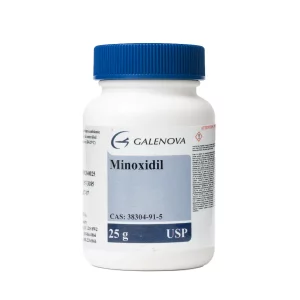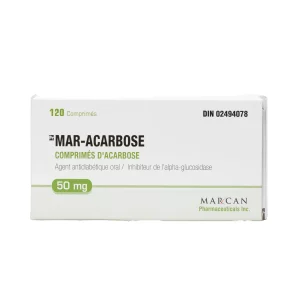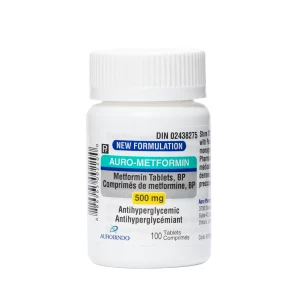Your cart is empty.
Your cart is empty.
Avodart, widely known for supporting prostate health and off-label hair regrowth, is gaining attention for a surprising potential benefit, skin health. While originally developed to manage benign prostatic hyperplasia (BPH), Avodart is increasingly being explored by wellness communities for its hormonal balancing properties.
Now, many are asking: Can Avodart improve the way your skin looks and feels? As longevity seekers and health-conscious individuals look for multi-benefit solutions, interest is growing around whether Avodart reduces inflammation and enhances skin clarity.
This article dives deep into how Avodart works in the body and whether it can actually contribute to healthier, more balanced skin. We’ll also discuss those using Avodart for hair loss and what that might mean for your skincare goals. If you’re someone looking to optimize both inner health and outer appearance, read on to see whether it’s time to Get Avodart into your wellness routine.
Avodart is the brand name for a medication called dutasteride. It’s primarily prescribed to treat an enlarged prostate, or benign prostatic hyperplasia (BPH). By managing hormone levels that contribute to prostate growth, Avodart helps reduce urinary issues in men.
Beyond its official use, dutasteride is gaining popularity for off-label purposes like hormone balancing and maintaining hair density. Some patients and doctors are now examining whether its benefits extend even further, possibly into the realm of skin health.

Hormones like testosterone and dihydrotestosterone (DHT) have a major role in how our skin behaves. DHT, in particular, is known to stimulate sebaceous (oil) glands in the skin. When DHT levels are high, the skin may become excessively oily, which can clog pores and lead to acne or other skin concerns.
Managing hormone levels, especially DHT, is increasingly seen as a strategy to help maintain a smoother, clearer complexion, especially in adults. That’s why hormone-modulating treatments like oral dutasteride are being looked at from a broader perspective.
Avodart works by blocking the enzyme 5-alpha reductase. This enzyme is responsible for converting testosterone into DHT. By reducing this conversion, Avodart effectively lowers DHT levels throughout the body.
This reduction doesn’t only impact the prostate, it affects areas like the scalp, skin, and other hormone-sensitive tissues. So while the main goal of Avodart might be prostate-related, the hormonal changes it causes could also lead to skin benefits over time.

Some people who take Avodart notice clearer, less oily skin. The reason? Lower DHT levels often result in reduced sebum (oil) production. Less oil on the skin can mean fewer clogged pores and less acne.
However, it’s important to know these effects are considered anecdotal. While many report these changes, they’re not the primary focus of dutasteride treatment. Still, the overlap between hormone control and improved skin appearance is compelling, especially for wellness-focused users.
While dutasteride isn’t officially approved for skin care, studies have started exploring its potential in dermatology. Research has shown that DHT plays a strong role in sebum production, and that blocking DHT may help reduce oiliness in some people.
A 2022 clinical trial looked into dutasteride treatment for hormonal acne and found that some participants experienced reduced skin breakouts. Other reports highlight its potential in managing acne vulgaris, particularly in patients whose skin issues stem from hormonal imbalances.
The connection is still being studied, but the data suggests dutasteride solution and oral versions may hold promise beyond just hair or prostate benefits.
Both hair follicles and sebaceous glands are influenced by DHT. That’s why some people notice improvements in both hair density and skin clarity after starting dutasteride.
The mechanisms are similar: reduce DHT, and you may reduce both hair loss and skin oiliness. While these effects are off-label, the overlap makes Avodart an appealing option for people targeting androgenic alopecia and skin concerns in the same wellness strategy.
People dealing with hormonal acne, especially adults, may be more likely to notice skin improvements when using dutasteride. The same goes for those who experience excess oil or inflammation-related skin issues.
That said, results can vary. Some users may see visible improvement in as little as a few weeks, while others may need 3 to 6 months of regular use to assess their progress. It’s best to approach this with patience and a long-term mindset.
Managing hormones is a growing trend in longevity-focused wellness. Lowering excess DHT is one way some users aim to optimize internal balance and improve external signs like hair and skin.
Since skin health often reflects internal health, including hormonal wellness, Avodart fits into this lifestyle as a potential aid. Of course, it’s not a skincare product, but a systemic solution that may deliver skin benefits as a secondary effect when used responsibly and under professional care.
Want to know if Avodart improves skin for you? Start by taking regular photos under consistent lighting. Try to notice changes in shine, oil levels, or overall texture.
Log your results every few weeks. Many people report visible changes by month three, though full benefits may take longer. Always monitor progress with your healthcare provider, especially if you’re taking other supplements or hormone-based treatments.
Before starting Avodart for off-label skin use, speak with your doctor. They can help review your overall health, your goals, and whether this treatment fits your needs.
Professional oversight is important, especially for long-term hormone modulation. While dutasteride is considered safe when prescribed, using it with intention and supervision will ensure better outcomes for both your skin and health.
Some users report clearer skin due to lower DHT levels, but results vary and are not guaranteed.
While not officially approved, some dermatologists explore its use off-label for hormonal acne.
Skin changes may take 3 to 6 months of daily use, depending on individual hormonal patterns.
Always consult a healthcare provider, as Avodart is primarily a hormone-modulating medication.
Possibly, since DHT levels may return to baseline, and hormonal oil production may increase again.





Unlock savings on bundles and elevate your online experience today!